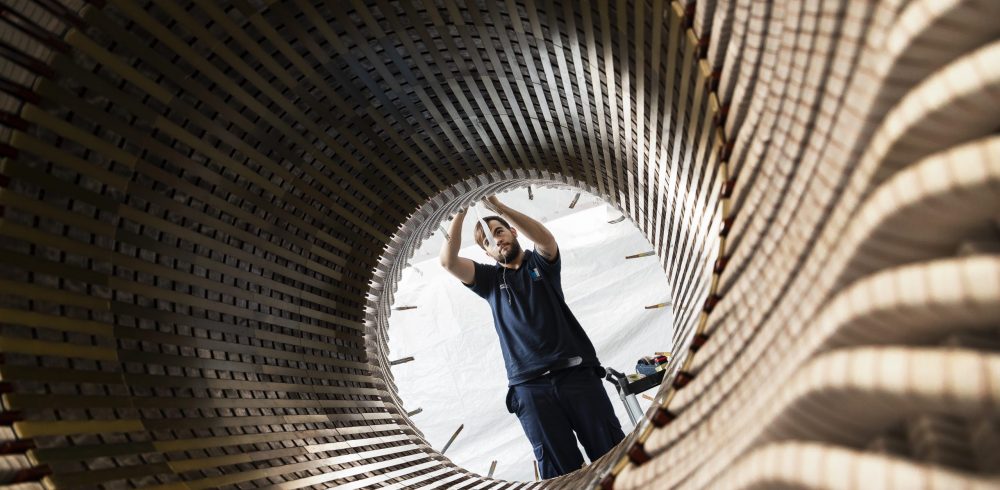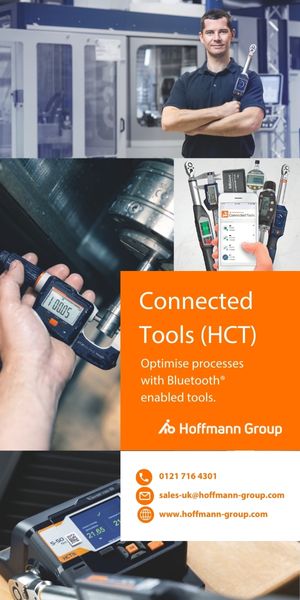Environmental concerns, the need to keep costs down and a number of wider geopolitical factors are pushing manufacturers to repair industrial equipment when possible, rather than replacing it. However, repairing critical machinery such as electric motors is a matter that must be entrusted to the right hands. Here Graham Knight, QHSE Manager at electromechanical specialist Houghton International, discusses the quality trademarks that can help asset managers make an informed decision when choosing a repair partner.
The maintenance of critical equipment such as electric motors is a key factor in operational efficiency. Trusting your equipment to the wrong repair facility can result in longer lead times, sub-standard repairs and even permanent damage, extending periods of unplanned downtime and ultimately damaging the business’ bottom line. In safety-critical sectors such as transport, power generation or the process industry, relying on trustworthy professionals is even more crucial.
Several factors can affect the quality of the repair and rewind services provided, from adherence to internationally accepted best practices, to the ability to accommodate emergency repairs when needed. So, what are the trademarks of a trustworthy electromechanical repair partner?
International standards
Affiliation with the Electrical Apparatus Service Association (EASA) provides the first indication that a repair facility is following universally accepted standards. EASA is an international trade body bringing together more than 1,700 members in nearly 70 countries. It provides up-to-date resources for companies that sell and repair electric motors, pumps, gearboxes and other rotating machinery, ensuring that they follow the latest best practice guidelines and keep up with recent methods for the diagnosis and repair of electromechanical assets.
Beyond being EASA members, repair facilities can gain further accreditations, such as EASA AR100, by following established practices in each step of the rewinding and overhauling of rotating machinery. These procedures are continually updated as best practice evolves — the latest version of EASA AR100 came out in 2020 — and audits are conducted to make sure that a facility complies with the latest recommendations.
A quality and safety agenda
A commitment to health and safety compliance demonstrates the professionality of a motor repairer. As well as having a quality, health, safety and environmental (QHSE) manager on board, the facility should be certified to ISO 45001:2018, the latest standard to ensure the safety of employees, customers and visitors. ISO 45001 provides a further guarantee that staff have the necessary skills to carry out their work safely and assess and manage risks effectively.
Another important accreditation is ISO 9001, which ensures that all technicians have received the necessary training to carry out work to the highest quality standards. The policy also establishes that suppliers’ performance will be strictly monitored, especially those who supply safety critical equipment.
Finally, ISO 14001 ensures that the repairer’s activities will be carried out in compliance with the latest environmental regulations. This accreditation certifies that the organisation has processes and procedures in place to measure, manage and improve its environmental impact, from harmful emissions to the amount of production scrap it generates.
Testing equipment
Periodic testing is recommended to keep motors operational for as long as possible. As well as forming part of an essential preventative maintenance strategy, testing is also of the utmost importance as a form of quality assurance after the overhaul, repair and rewinding of electric motors.
As a consequence, a reputable repairer will be able to offer a wide range of electrical and mechanical tests, both in situ and in their facility, to assess the conditions of a motor’s windings and insulation, predict early signs of deterioration and schedule further repairs if necessary. These can include vibration analysis, thermography, laser alignment, oil and lubrication analysis, shock pulse monitoring and bearing analysis, and electrical testing such as winding resistance, meg-ohm, polarization index, high-potential (HiPot), surge and Partial Discharge testing.
The presence of up-to-date testing equipment in line with EASA and IEEE standards is therefore a good indication of the facility’s reliability. Moreover, customers should expect to receive thorough reports on the motor’s health before, during and after repairs, ideally with supporting images.
A state-of-the-art facility
A quality repair facility should have the equipment and skilled technicians to provide state-of-the-art services without having to outsource key processes such as machining, which would extend lead times and increase costs. Modern facilities may also offer specialised services such as 3D scanning and printing, to manufacture obsolete parts or parts whose original CAD designs are no longer available.
Finally, make sure that the facility has the right equipment to handle motors of all sizes. For example, Houghton International’s Large Machine Shop offers 40-tonne craneage and a 13 metre working height, with 15,000 sq ft of dedicated space to accommodate larger machines and specialist projects. But floor space and craneage aren’t the only parameters to consider when working with large motors. For example, while vacuum pressure impregnation (VPI) is an effective and commonly used method to insulate windings, it is not suitable for all machines, due to size or application. Houghton International can offer a range of options, from VPI to their trademarked, fully-cured resin-rich coil — HIFLEX. Therefore, each rewind can be tailored to customer needs.
The ultimate trademark — the people
While accreditations and equipment are essential, it is ultimately the team that is responsible for adhering to best practices. A reputable electromechanical specialist will be proud to let you know about the team culture, skillsets and expertise, as well as any training and upskilling scheme they might be running or taking part in.
Your electromechanical specialist should become an extension of your own operations and provide the assets and expertise you lack in house. Remember that with electric motors, minor issues such as slight misalignments or a small overload can quickly snowball and lead to catastrophic failure. Maintaining a close relationship with a reliable electromechanical specialist will ensure that your assets are kept in operation for as long as possible and that emergency repairs are minimised.
Manufacturing & Engineering Magazine | The Home of Manufacturing Industry News















